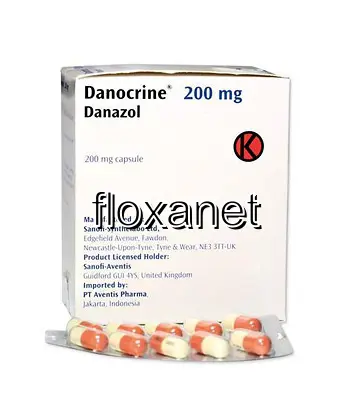| Package | Dosage | Price | Price per Dose | |
|---|---|---|---|---|
| Dosage: 50mg | ||||
| 360 pill | 50mg | €536.12 | €1.49 | |
| 180 pill | 50mg | €270.42 | €1.50 | |
| 120 pill | 50mg | €181.85 | €1.51 | |
| 90 pill | 50mg | €139.34 | €1.55 | |
| 60 pill | 50mg | €95.64 | €1.59 | |
| 30 pill | 50mg | €50.77 | €1.70 | |
| Dosage: 100mg | ||||
| 180 pill | 100mg | €552.66 | €3.07 | |
| 120 pill | 100mg | €373.16 | €3.11 | |
| 90 pill | 100mg | €282.23 | €3.13 | |
| 60 pill | 100mg | €190.12 | €3.16 | |
| 30 pill | 100mg | €96.82 | €3.21 | |
| Dosage: 200mg | ||||
| 120 pill | 200mg | €488.89 | €4.07 | |
| 90 pill | 200mg | €371.98 | €4.13 | |
| 60 pill | 200mg | €269.24 | €4.49 | |
| 30 pill | 200mg | €139.34 | €4.63 | |

Danazol Description
Overview of Danazol
Danazol is a synthetic steroid derived from ethisterone, primarily used to treat a range of medical conditions related to hormonal imbalances. It belongs to the class of androgens and has a unique mechanism of action that influences the endocrine system. Typically, Danazol is prescribed for conditions such as endometriosis, fibrocystic breast disease, and hereditary angioedema. It works by suppressing the production of certain hormones, which helps in reducing symptoms and managing the underlying disorders.
Mechanism of Action
Danazol acts by inhibiting the secretion of gonadotropins, mainly luteinizing hormone (LH) and follicle-stimulating hormone (FSH). This leads to a decrease in estrogen and progesterone levels, thereby creating a hormonal environment that shrinks endometrial tissue or alleviates other hormonal conditions. Its androgenic properties also contribute to tissue effects, influencing various physiological processes. Due to this dual action, Danazol can modulate immune responses and tissue growth, making it effective in managing specific medical conditions.
Medical Uses and Effectiveness
This medication is most commonly prescribed for endometriosis, a painful disorder where tissue similar to the uterine lining grows outside the uterus. By reducing hormone levels, Danazol helps to decrease the size of endometrial tissue and relieve pain. It is also used to treat hereditary angioedema, a genetic disorder causing swelling in various parts of the body, by stabilizing the immune system response. Some physicians may recommend Danazol for fibrocystic breast disease to manage symptoms such as pain and lump formation. Many patients find significant relief from symptoms when using Danazol as prescribed.
Dosage and Administration
The dosage of Danazol depends on the condition being treated, the severity of symptoms, and the patient’s response. It is usually taken orally, with or without food, to improve adherence. Typically, the treatment course involves daily doses for several months, with careful monitoring by a healthcare professional. It is crucial to follow the prescribed dosage precisely and not to alter it without medical advice. Regular check-ups and blood tests are recommended during treatment to monitor hormone levels and detect potential side effects early.
Potential Side Effects
Like many hormones and steroid medications, Danazol can cause side effects. Common adverse reactions include weight gain, acne, oily skin, hot flashes, and breast tenderness. Some users may experience changes in menstrual patterns or irregular bleeding. More serious but less frequent side effects involve liver function abnormalities, voice deepening, hair growth in unwanted areas, or mood changes. Because of these potential risks, patients on Danazol require ongoing medical supervision. Anyone experiencing severe or persistent side effects should consult their doctor promptly.
Precautions and Interactions
Before starting Danazol, it is essential to inform the healthcare provider about any existing health issues, especially liver disease, breast cancer, or hormonal disorders. This medication may not be suitable for pregnant or breastfeeding women due to possible risks to the baby. Additionally, Danazol can interact with other drugs, including anticoagulants, corticosteroids, and certain antifungals. Patients should disclose all current medications to their doctor. Regular liver function tests and monitoring of hormone levels are necessary during therapy to minimize risks and adjust treatment as needed.
